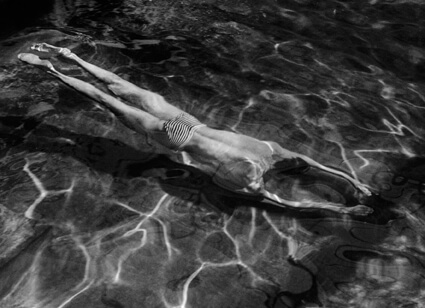
André Kertész, Mirroring Life
Palazzo Ducale - Fondazione per la Cultura, Genova
From 24 February to 17 June 2018
Extramural
Featuring many unpublished photos (a third of the show), with a selection in colour, this retrospective retraces the career of André Kertész, whose work very much reflected his life and feelings, from the early days in Hungary (1912-1925) and his artistic development in France (1925-1936) to the years of isolation in New York (1936-1962) and then international fame (1962-1985).
André Kertész (1894-1985), whose career spanned over fifty years (1920-1980), is today acknowledged as one of the most influential photographers of the 20th century.
Born in Budapest in 1894, he took his first photographs in 1912. Kersész’s ‘Hungarian’ period (his forming years as a photographer) was an important stage in the development of his style. Having enlisted in the Austro-Hungarian army during the First World War, he depicted the daily life of soldiers, creating a poetic art of the moment by recording the details of military life, far removed from war-time heroics or dramas.
Kertész arrived in Paris in 1925 and settled in Montparnasse. He moved in literary and artistic circles (Mondrian, Chagall, Zadkine, Foujita, Colette, etc.). His talent was soon recognised, and, in 1927, he held an exhibition in the Au Sacre du Printemps gallery. He strolled through public gardens, wandered along the banks of the Seine and photographed street scenes. In 1933, he completed his famous Distortions series, in which the naked bodies of his two models were reflected in a distorting mirror, and 1934 saw the publication of his book, Paris vu par André Kertész (Paris seen by André Kertész) with a text by Pierre Mac Orlan. At the same time, he was one of the leading lights in the new illustrated (with photographs) press, of which the magazine, VU, became the finest example in 1928. The French and German press commissioned features and illustrations from him and published his photographs along with those of Germaine Krull, Man Ray, Emmanuel Sougez, François Kollar and Brassaï, whom he had met in 1926 and introduced to photography.
He went to New York in 1936 to fulfil a contract with Keystone. This collaboration with one of the greatest press agencies of the times lasted less than a year. He was approached by House & Garden, Harper’s Bazaar, Vogue and Coronet. He became an American citizen in 1944, and, in 1949, signed a sole contract with Condé Nast, for whom he worked mainly on interior design photography. He decided to retire from his professional career in 1962.
In 1964, the Museum of Modern Art in New York devoted an exhibition to him. Many tributes were paid to him from across the world, and exhibitions were held in Tokyo, Stockholm, Budapest, London, Paris, Helsinki and so on. He was invited as guest of honour to Arles for the Rencontres internationales de la Photographie in 1975. It is then that he stopped strolling up and down the streets, and began taking most of his photographs from his window. He was fascinated by the web of roofs and the plunging views down Washington Square. He died in his New York home on September 28th, 1985.
Exhibition organized in collaboration with the Médiathèque de l’architecture et du patrimoine, the DAPA-Ministère de la culture et de la communication.
Palazzo Ducale – Fondazione per la Cultura
Piazza Matteotti 9
Genova
